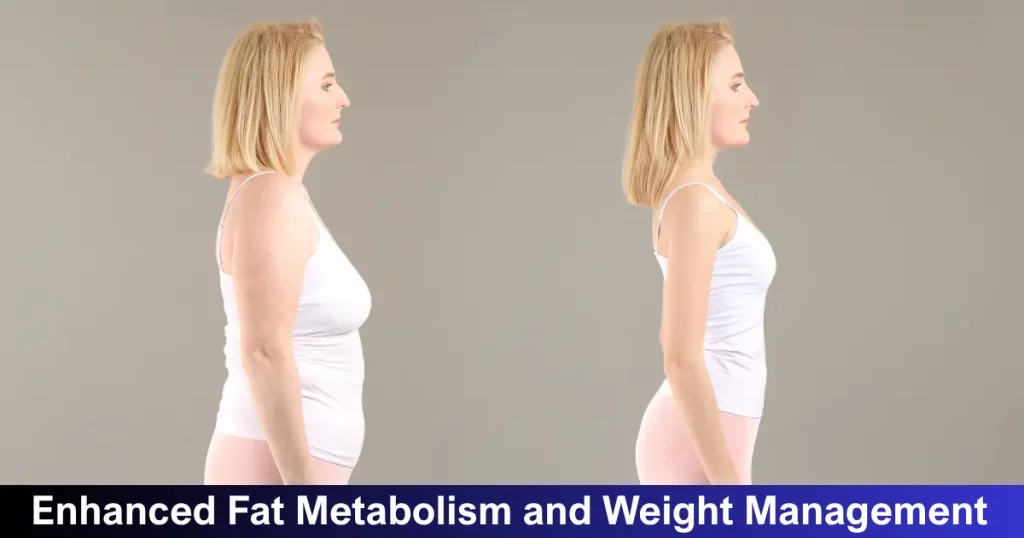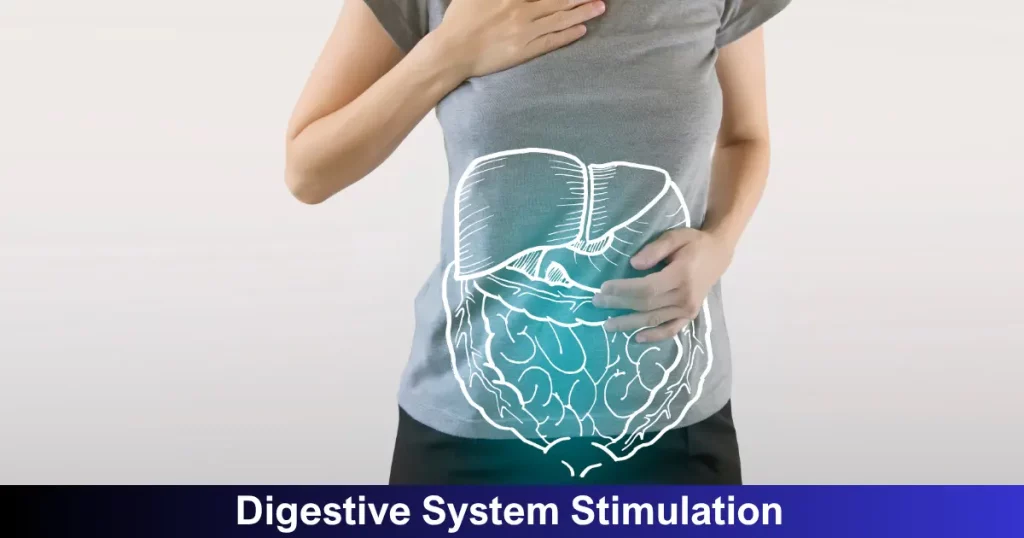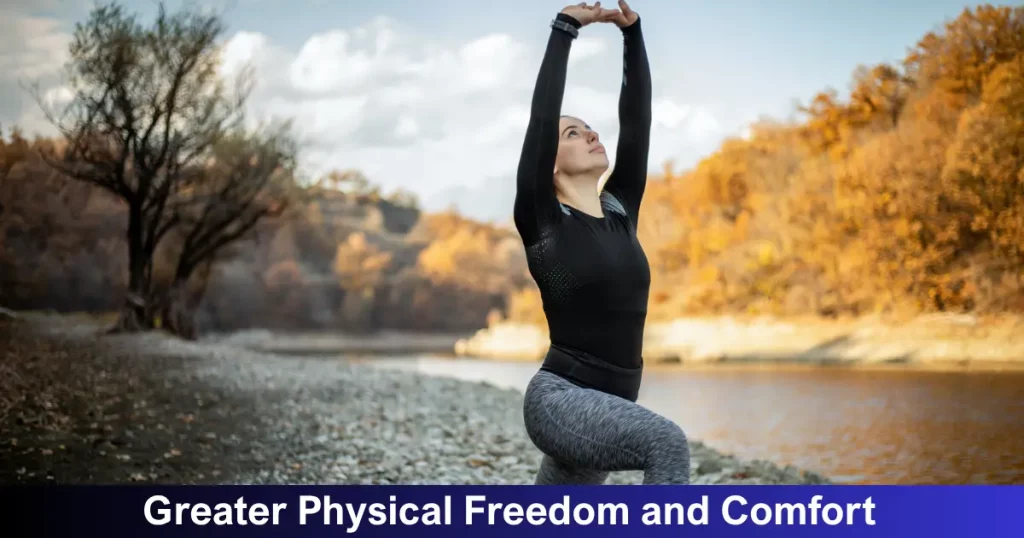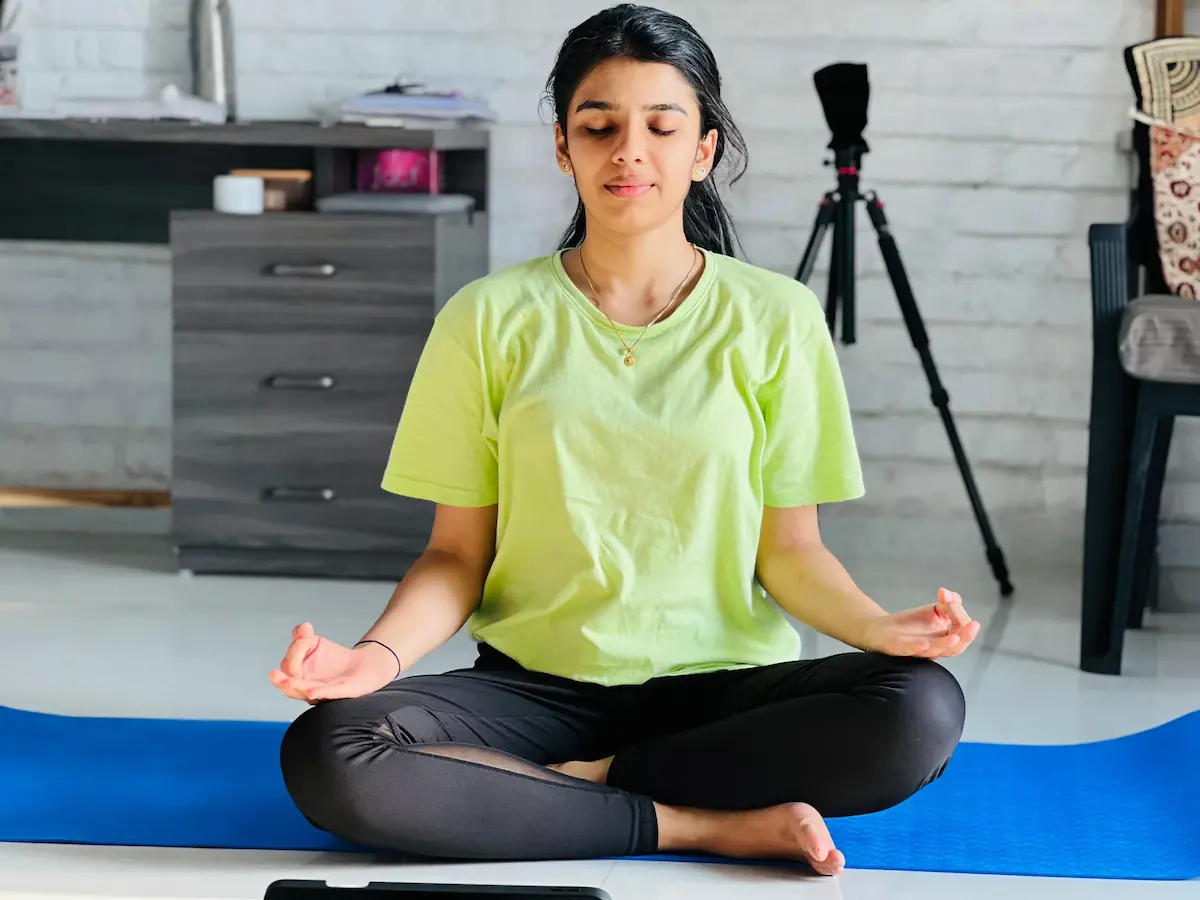The question of whether to practice yoga on an empty stomach has sparked considerable debate among practitioners, with compelling arguments on both sides. While traditional yoga philosophy favors fasted practice, modern research reveals a more nuanced picture that depends on individual factors, goals, and circumstances.

The Case for Empty Stomach Yoga
Enhanced Fat Metabolism and Weight Management

Scientific evidence strongly supports the metabolic benefits of exercising in a fasted state. A comprehensive meta-analysis of 273 participants found that aerobic exercise performed while fasting induced significantly higher fat oxidation compared to exercise in the fed state. Similarly, a 2022 study at Nottingham Trent University demonstrated that evening exercise on an empty stomach increased fat burning by approximately 70% – from 4.5g to 7.7g during a 30-minute session.
Research published in the American Journal of Physiology revealed that fasted exercise promotes more favorable adaptations in adipose tissue. The study found that gene expression patterns differed significantly between fasted and fed exercise states, with increased expression of PDK4 and HSL genes indicating enhanced utilization of stored fat for energy rather than recently consumed carbohydrates.
Digestive System Stimulation

Traditional yoga texts and modern practitioners emphasize that certain poses can stimulate digestive organs more effectively on an empty stomach. Twisting poses like seated spinal twist (Ardha Matsyendrasana) and forward bends such as Paschimottanasana are believed to massage abdominal organs and promote healthy peristalsis when performed without food in the digestive tract.
Morning yoga practice on an empty stomach is particularly beneficial for kickstarting your metabolism and digestive system’s peristaltic movements. The mechanical compression and release of abdominal organs during various poses can help stimulate digestive juices and prepare your system for the day ahead.
Greater Physical Freedom and Comfort

An empty stomach allows for deeper, more comfortable stretches and twists. Without food occupying space in your digestive tract, poses that require abdominal compression – such as forward folds, twists, and inversions – become more accessible and less uncomfortable. This physical freedom can lead to a more satisfying and effective practice.
Mental Clarity and Focus

Fasted yoga practice often promotes heightened mental clarity and focus. When your body isn’t diverting energy to digest food, more resources can be allocated to concentration and mindfulness. Many practitioners report feeling lighter and more energized during morning fasted sessions, allowing for deeper meditation and breathwork.
The Risks and Drawbacks of Empty Stomach Practice

Blood Sugar-Related Complications
One of the most significant concerns with fasted yoga is the risk of hypoglycemia (low blood sugar), which can manifest as dizziness, lightheadedness, shakiness, and confusion. These symptoms are particularly dangerous during balance poses, inversions, and flowing sequences that require stability and coordination.
People with diabetes, hypoglycemia, or other blood sugar regulation issues face elevated risks when exercising without eating. The combination of physical exertion and depleted glucose stores can lead to dangerous drops in blood sugar levels, potentially causing fainting or injury.
Increased Injury Risk
Without adequate fuel, muscles, ligaments, and tendons may be compromised in their function, increasing the likelihood of injury. Proper form becomes more challenging to maintain when your body lacks energy, and your reaction time may be slower. This is particularly concerning for beginners who are still learning correct alignment and technique.
Performance and Enjoyment Limitations
Research indicates that fasted exercise often results in decreased performance, motivation, and enjoyment. A 2022 study found that participants covered less distance during time trials, had lower motivation to exercise, and enjoyed their workouts less when performed in a fasted state compared to fed conditions.
Digestive Discomfort and Nausea
Contrary to expectations, some people experience increased nausea and digestive discomfort when exercising on an empty stomach. This can be particularly problematic during more intense yoga styles or heated classes where the body is already under stress.
Read More: 7 Beginner Yoga Poses That Offer Maximum Health Benefits at Home
Individual Factors to Consider

Experience Level and Body Type
Beginners should generally eat something light before practice to prevent dizziness and maintain proper form while learning poses. More experienced practitioners may have developed the body awareness and blood sugar stability needed to safely practice fasted.
Body composition also plays a role – individuals with lower body fat percentages may need more readily available energy, while those with higher fat stores might tolerate fasted practice better.
Yoga Style and Intensity
Gentle, restorative, or yin yoga styles may be suitable for fasted practice, while more vigorous forms like power yoga, hot yoga, or Ashtanga typically require fuel for safety and effectiveness. Inversions and challenging balance poses are particularly risky when blood sugar is low.
Health Conditions and Medications
Several health conditions warrant caution with fasted exercise, including:
- Diabetes and blood sugar disorders
- Heart conditions
- Eating disorders or disordered eating patterns
- Gastrointestinal issues like GERD or ulcers
- Certain medications that affect blood sugar or blood pressure
Read More: Best Superfoods to Boost Your Weight Loss Journey
Time of Day and Schedule
Early morning practice after an overnight fast presents the highest risk for low blood sugar. Afternoon or early evening sessions may be better tolerated when practicing fasted, as blood sugar levels tend to be more stable later in the day.
Safe Practices for Empty Stomach Yoga
If you choose to practice yoga on an empty stomach, follow these evidence-based safety guidelines:
Start Gradually
Begin with gentle, short sessions and slowly build intensity and duration as your body adapts. Monitor your response carefully and adjust accordingly.
Stay Hydrated
Drink water before and after practice to prevent dehydration, which can exacerbate dizziness. However, avoid excessive water intake immediately before practice to prevent discomfort.
Modify Your Practice
- Limit or avoid inversions and challenging balance poses
- Move slowly between positions, especially when transitioning from lying to standing
- Take breaks as needed in child’s pose or other resting positions
- Avoid rapid breathing techniques that might affect blood pressure
Listen to Your Body
Stop immediately if you experience dizziness, nausea, chest pain, excessive fatigue, or any other concerning symptoms. These are signs that your body needs fuel.
Post-Practice Nutrition
Eat a balanced meal within 30-60 minutes after completing your fasted practice to support recovery and prevent excessive hunger later in the day.
Optimal Pre-Yoga Nutrition for Fed Practice
For those who prefer or need to eat before yoga, timing and food choices are crucial:
Timing Guidelines
- Large meals: Wait 3-4 hours before practice
- Light meals: Wait 1-2 hours before practice
- Light snacks: Eat 30-60 minutes before practice
- Liquids: Allow 15-30 minutes for digestion
Ideal Pre-Yoga Foods
30-60 Minutes Before Practice:
- Banana with a small amount of almond butter
- Greek yogurt with berries
- A small smoothie with fruit and mild protein
- A few dates or a piece of fruit
- Small handful of nuts
1-2 Hours Before Practice:
- Whole grain toast with avocado
- Oatmeal with fruit and nuts
- Yogurt parfait with granola
- Apple with peanut butter
Foods to Avoid
- High-fat, high-fiber, or spicy foods that may cause digestive discomfort
- Large portions that could lead to nausea during twists and forward bends
- Excessive caffeine, which can increase jitters and dehydration risk
Read More: Cut Processed Foods in Daily Diet with These 10 Healthy Substitutes to Lower Cancer Risk
Making the Right Choice for Your Practice

The decision to practice yoga on an empty stomach should be highly individualized. Consider these key factors:
Choose Empty Stomach Practice If:
- You’re an experienced practitioner with good body awareness
- You have stable blood sugar and no relevant health conditions
- Your primary goals include fat burning or metabolic benefits
- You prefer gentle or restorative yoga styles
- You practice later in the day when blood sugar is more stable
Choose Fed Practice If:
- You’re new to yoga and still learning proper alignment
- You have diabetes, hypoglycemia, or blood sugar regulation issues
- You’re planning an intense or long practice session
- You’re practicing early morning when blood sugar is naturally lower
- You have a history of eating disorders
- You’re underweight or have a fast metabolism
Evidence-Based Recommendations
Current research suggests that while fasted exercise can provide metabolic benefits, these advantages must be weighed against safety concerns and individual factors. The optimal approach depends on your specific circumstances, goals, and body’s response.
For most practitioners, especially beginners, having a light snack 30-60 minutes before practice provides the best balance of safety, performance, and comfort. This approach allows you to maintain stable blood sugar while avoiding the discomfort of practicing with a full stomach.
Advanced practitioners who wish to explore fasted practice should do so gradually, under appropriate guidance, and with careful attention to their body’s signals. The potential benefits of enhanced fat oxidation and metabolic adaptation may be worth pursuing for some individuals, but safety should always be the primary consideration.
Frequently Asked Questions
Q: What are the best yoga poses to do on an empty stomach?
A: For beginners practicing fasted, stick to basic seated and lying poses like child’s pose, cat/cow, gentle twists, and bridge pose. These poses can stimulate digestion without requiring significant energy or balance. Avoid strenuous poses, core work, inversions, and challenging balances when fasted.
Q: How long should I wait after eating to do yoga?
A: Allow 3-4 hours after large meals, 1-2 hours after light meals, 30-60 minutes after light snacks, and 15-30 minutes after drinking liquids. This timing ensures comfortable digestion and prevents nausea during poses.
Q: What should I do if I feel lightheaded during fasted yoga?
A: Stop immediately and rest in child’s pose. Breathe deeply and sip water slowly. If symptoms persist, end your practice and eat something. For future sessions, consider having a light snack beforehand or practicing at a different time of day.
Q: Can fasted yoga help with weight loss?
A: Research shows fasted exercise can increase fat oxidation during the session, but long-term weight loss depends on overall calorie balance and consistency rather than exercise timing. While fasted yoga may contribute to weight management goals, it’s not a magic solution.
Q: Is it safe to drink coffee before fasted yoga?
A: Small amounts of caffeine may be acceptable for some people, but coffee on an empty stomach can increase jitters, anxiety, and dehydration risk. If you choose to have coffee, keep it minimal and ensure adequate hydration.
Q: Should beginners ever do yoga on an empty stomach?
A: Generally, beginners should eat something light before practice to maintain energy levels, prevent dizziness, and ensure they can focus on learning proper alignment. Fasted practice is better suited for experienced practitioners with good body awareness.
Q: What’s the best time of day for fasted yoga?
A: While early morning is traditional, afternoon or early evening may be safer for fasted practice as blood sugar levels are typically more stable later in the day. Morning fasted practice carries the highest risk of hypoglycemia.
Q: Is hot yoga safe on an empty stomach?
A: No, hot yoga is very demanding and dehydrating. The combination of heat, intense poses, and fasting significantly increases the risk of dehydration, fainting, and heat-related illness. Always eat something and hydrate well before heated classes.
Q: Can I drink electrolyte drinks before fasted yoga?
A: Yes, low-calorie electrolyte beverages, coconut water, or protein shakes can provide necessary minerals and energy without breaking your fast completely. These options are preferable to plain water for longer or more intense sessions.
Q: What should I eat immediately after fasted yoga?
A: Within 30-60 minutes, consume a balanced meal with complex carbohydrates (oatmeal, whole grain toast), protein (eggs, yogurt), and healthy fats (avocado, nuts). Include fruits and vegetables for vitamins and minerals. Stay hydrated with water or herbal tea.
Q: How can I tell if fasted yoga is working for me?
A: Monitor your energy levels, mood, digestive comfort, and hunger cues during and after sessions. Positive indicators include feeling energized and focused rather than dizzy or fatigued. If you consistently experience discomfort, dizziness, or decreased performance, fasted practice may not be suitable for you.
Q: Can diabetics ever do yoga on an empty stomach?
A: People with diabetes should be extremely cautious about fasted exercise due to the risk of dangerous blood sugar drops. They should eat a balanced snack beforehand, monitor blood glucose levels closely, and carry quick-acting glucose tablets. Consultation with a healthcare provider is essential before attempting fasted practice.

